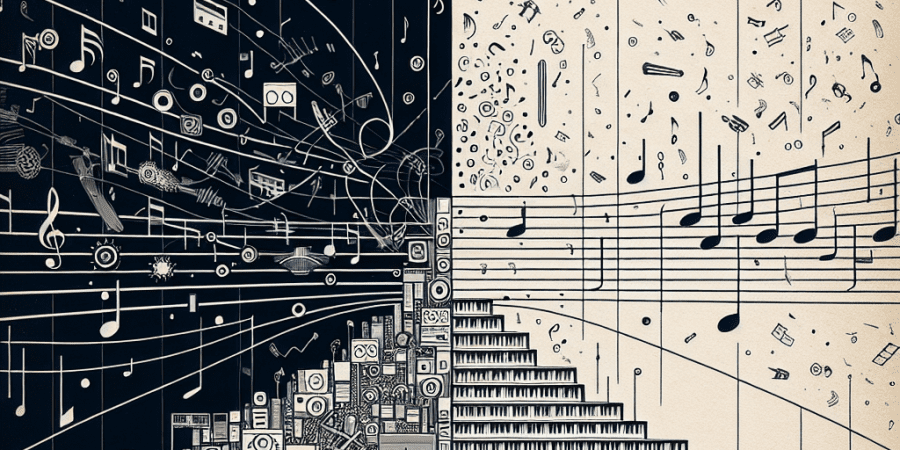The Rise of Minimalism in Modern Music
Minimalism in modern music has taken the industry by storm. With its roots grounded in the 20th century, this musical movement emphasizes simplicity and clarity, creating powerful auditory experiences through repeated patterns and subtle variations. The stripped-down approach to composition has made waves in various musical genres, influencing contemporary sounds and captivating audiences worldwide.
The Origins of Minimalist Music
To understand the rise of minimalism in modern music, it is essential to trace its origins. The birth of minimalist music can be attributed to the late 1960s, when composers like Steve Reich, Philip Glass, and Terry Riley started experimenting with repetitive structures and cycles. Influenced by Western classical traditions and non-Western music, these pioneers sought to break away from the complexity of traditional classical music.
Steve Reich’s iconic composition “Music for 18 Musicians” and Philip Glass’s opera “Einstein on the Beach” are some notable early works that showcase the essence of minimalism. By focusing on harmony, rhythm, and gradual changes over time, these compositions created hypnotic soundscapes that resonated deeply with listeners.
Characteristics of Minimalist Music
Minimalist music is characterized by several key features:
- Repetition: Repeated motifs and patterns are a hallmark of minimalist compositions, creating a trance-like effect.
- Rhythmic Steadiness: A steady pulse or beat often underpins minimalist music, providing structural consistency.
- Gradual Transformation: Subtle changes over time keep the music dynamic and evolving.
- Limited Instrumentation: Minimalist composers often use fewer instruments, focusing on their timbral quality and interplay.
- Silence and Space: Strategic use of silence and space between notes enhances the musical experience.
- Focus on Tone and Texture: Rather than melodic complexity, minimalist music emphasizes tone color and textural layering.
Impact on Modern Music Genres
The influence of minimalist music extends far beyond classical compositions, permeating various modern music genres:
Electronic Music
Electronic music has embraced minimalism wholeheartedly. Artists like Brian Eno and Aphex Twin have incorporated minimalist principles into their ambient and techno creations. By using loops, drones, and sparse arrangements, these musicians create immersive environments that transport listeners to new auditory realms.
Popular Music
In popular music, minimalism has subtly woven its way into the fabric of contemporary production. Singer-songwriter Sufjan Stevens’s layered and repetitive arrangements in “Carrie & Lowell” and hip-hop producer Kanye West’s stripped-down beats in “Yeezus” are prime examples of minimalism’s pervasive influence.
Film Scores
Minimalist music has also found a significant place in film scores, where its evocative nature enhances the emotional impact of cinematic storytelling. Composers like Hans Zimmer and Ludovico Einaudi have used minimalist techniques to craft memorable soundtracks for films such as “Interstellar” and “The Intouchables.”
The Appeal of Minimalism to Modern Audiences
The appeal of minimalist music lies in its ability to create profound emotional responses with simplicity. In a fast-paced world dominated by constant sensory overload, minimalism offers a refreshing escape. Listeners can find solace in the meditative nature of these compositions, which encourage introspection and mindfulness.
Moreover, as attention spans shorten, the clarity and focus of minimalist music provide a welcome respite. The repetition and gradual evolution found in minimalist works can lead to a deeply immersive listening experience, making them particularly appealing in the age of streaming and digital music consumption.
Conclusion
The rise of minimalism in modern music signifies a shift towards valuing simplicity, clarity, and emotional resonance. From its roots in the mid-20th century to its pervasive influence across genres today, minimalist music continues to captivate and inspire. Whether through repeated motifs, rhythmic steadiness, or the strategic use of silence, the minimalist approach has forever changed the musical landscape, proving that sometimes, less truly is more.
As we look to the future, the minimalist movement’s enduring legacy will undoubtedly continue to shape and redefine the sounds of modern music, inviting listeners to experience the beauty of simplicity.
